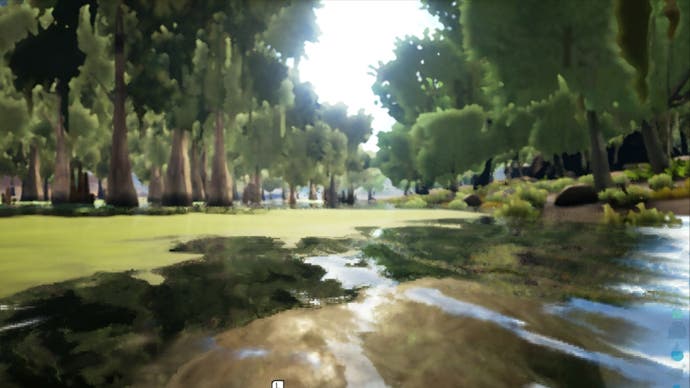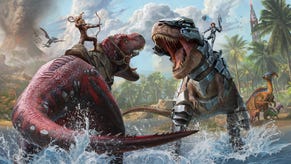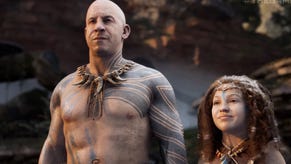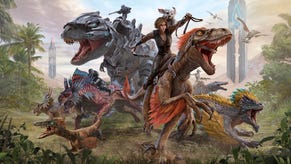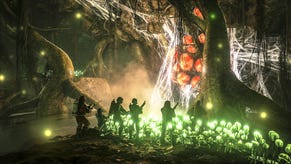Ark: Survival Evolved on Switch is cut back to the absolute barebones
It's playable, but the visual compromises are extraordinary.
Nintendo's Switch has been a genuine surprise - a hybrid console based on a mobile chipset that has delivered some remarkable tech showcases: the Doom 2016 port was a mini-revelation while the Wolfenstein 2 follow-up was even more mind-blowing. But these were streamlined 60fps games pared back to 30fps, and built around an eminently scalable engine - a state of affairs that doesn't fully apply to Studio Wildcard's Ark: Survival Evolved, which seems to have been dragged kicking and screaming onto the Switch hardware with some good - and some very bad - results.
We don't envy the developers tasked with bringing Ark over to the Switch - the game has never run particularly well, with even the six teraflop Xbox One X GPU unable to bring a smooth, consistent experience to console users. The developer's solution? Cut back everything to the absolute barebones and render it at what we believe to be the lowest native resolution we've seen on a current generation video game.
Where do we begin? Most of the foliage is removed, leaving the forest areas completely devoid of detail. The jungle floor looks borderline unfinished, the lack of foliage exposing textures with a brutally low resolution. Distant LODs can no longer be considered distant with trees and other objects popping into view just before the player. Right up until they fully draw-in, you're left with low resolution billboards. It's almost as if you're stuck walking through the most distant LOD levels at almost all times.
Textures are of an extremely low quality. The assets themselves have been reduced in detail but the dire texture filtering leaves them looking blurry and non-distinct, giving a look reminiscent of an N64 game. Textures are just a mess throughout and with most of the foliage detail eliminated, you're going to see a lot of them. On top of that, shadows are reduced to formless blobs that look more like a Rorschach test than an actual shadow-map. What's worse, these shadows change radically based on your position, completely changing the visuals seemingly at random - entire areas of shade can appear and disappear simply by moving slightly left or right.
Perhaps the most egregious issue is the low resolution and the attempts to work around it. This game is so blurry and so low resolution that it's difficult to even understand what techniques are in use here. Standard pixel-counting techniques indicate resolutions around 360p and 432p in docked mode but if you pause during motion, the whole screen breaks apart and huge pixel edges become evident. In these instances, we've counted as low as 304x170. With the presentation breaking apart, confirming this is difficult but suffice to say, this is easily the blurriest image we've seen on a console this generation. It may be the case that the game is using Unreal's temporal upsampling feature to smooth out pixel edges but the base resolution is just too low, you're left with a blurry mess.
Jump over to handheld mode and the problem is exacerbated with even lower pixel counts. Again, getting accurate numbers here is challenging but the point is that the game is even blurrier still, with further cutbacks to image quality. Everything is pared back to the point where it's barely recognisable. It's true that playing on the smaller screen helps hide some of this to a degree but even there, it's still very noticeable.
As a fan of retro gaming, the low resolutions in play aren't necessarily a complete dealbreaker, but the problem here lies with the temporal component and the poor upscaling. I'd almost prefer raw pixels without anti-aliasing with a retro aesthetic. Modern graphics simply don't work at resolutions this low. On top of this, other effects and buffers render at the same super-low resolution - or perhaps even lower. Ambient occlusion, for instance, is a patchy mess - we'd almost be better off without it. Screen-space reflections made the cut but again, the resolution is too low, and they wind up looking messy and distorted. It's not worth it.
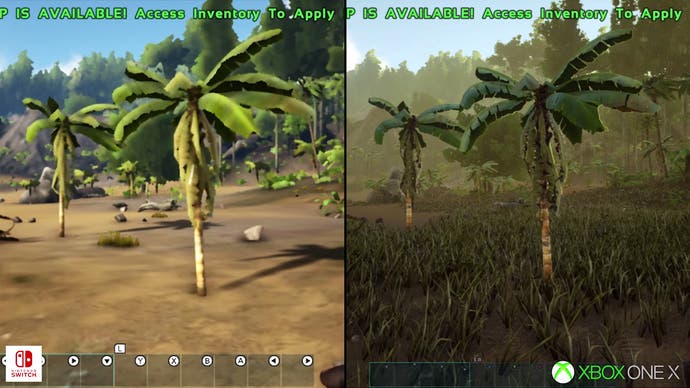
When you compare this directly to Xbox One, it may as well be a different game entirely - the Switch version looks like a poorly compressed JPEG version of an impressionist painting. The game has been massively stripped back but I honestly think that maybe more features should have been removed to get the resolution back to where it needs to be. In this respect, perhaps the mobile version holds the key. I played Ark on an iPhone X, finding that it runs at a higher resolution with smoother performance - yet it's clearly lacking many of the visual features present in the console and PC versions. I feel like it would have been a better base to start from as the art winds up looking more attractive as a result of the increased resolution. The bottom line is that the Switch version suffers by trying to deliver the full experience. It's massively ambitious but the final result just doesn't deliver.
On the face of it, this is pretty much a disaster in terms of visuals but I feel for the programmers - trying to transplant the full Ark experience to Switch must have been very difficult and the results are pretty much what you'd expect visually, but that doesn't mean there isn't some good news. You see, Ark doesn't run that badly. Well, okay, I should clarify - by the standards of most games, the frame-rate isn't great, but if you remember how the game can run on a regular PS4 or Xbox One, the Switch version stacks up fairly well. There are plenty of dips beneath 30fps, some lurching stutter and some prolonged drops below 20fps, but this is all par for the course if you've played Ark on another console. Even the handheld mode holds up fairly well - it's not too different to the docked experience in terms of overall frame-rates.
However, there is another performance-related issue: loading times. A cold boot of Ark on Switch takes a remarkable two minutes, 43 seconds to complete, with the game running from a high performance SD card. Running from internal NAND may be ever so slightly faster but it's usually comparable. The loading times are so long that the music eventually stops and it feels like the game has frozen.
Ark: Survival Evolved is an interesting port, but not exactly a successful one. The low pixel count, massively downgraded visuals and low frame-rate all subtract greatly from the experience. It is playable, but only just when so many compromises are in effect. That said, I suspect that we're not the target audience here and those that are really into Ark will probably enjoy it anyway. From a technical perspective though, one of the most ambitious conversion attempts falls flat - there's the sense that Studio Wildcard was so preoccupied with whether or not they could port the game to Switch, they didn't stop to think if they should.
